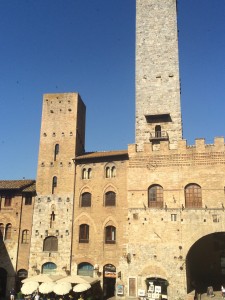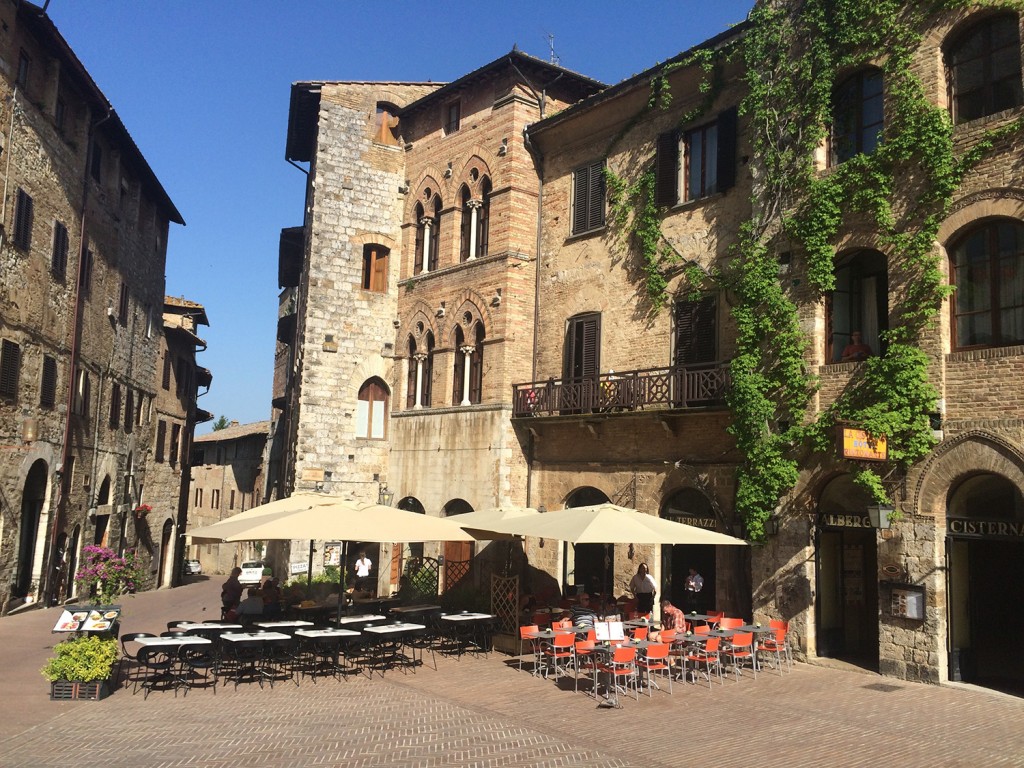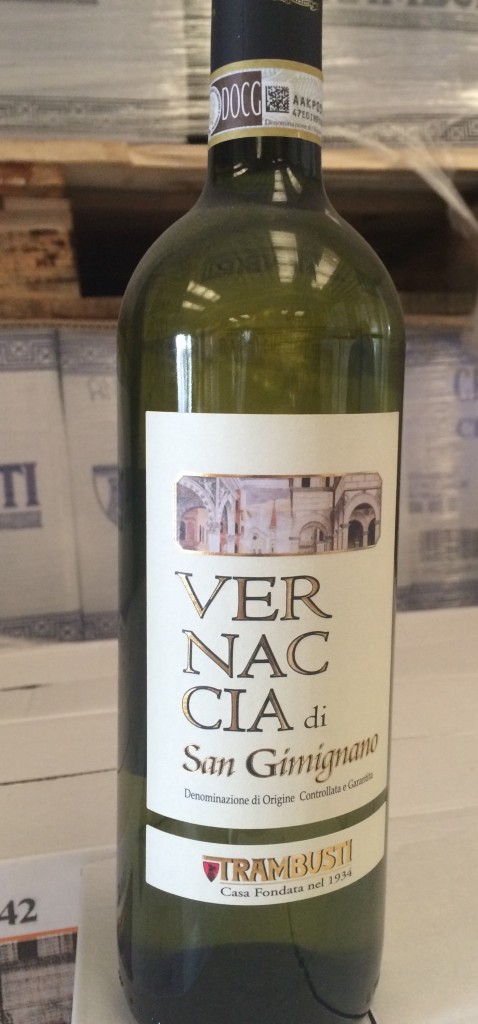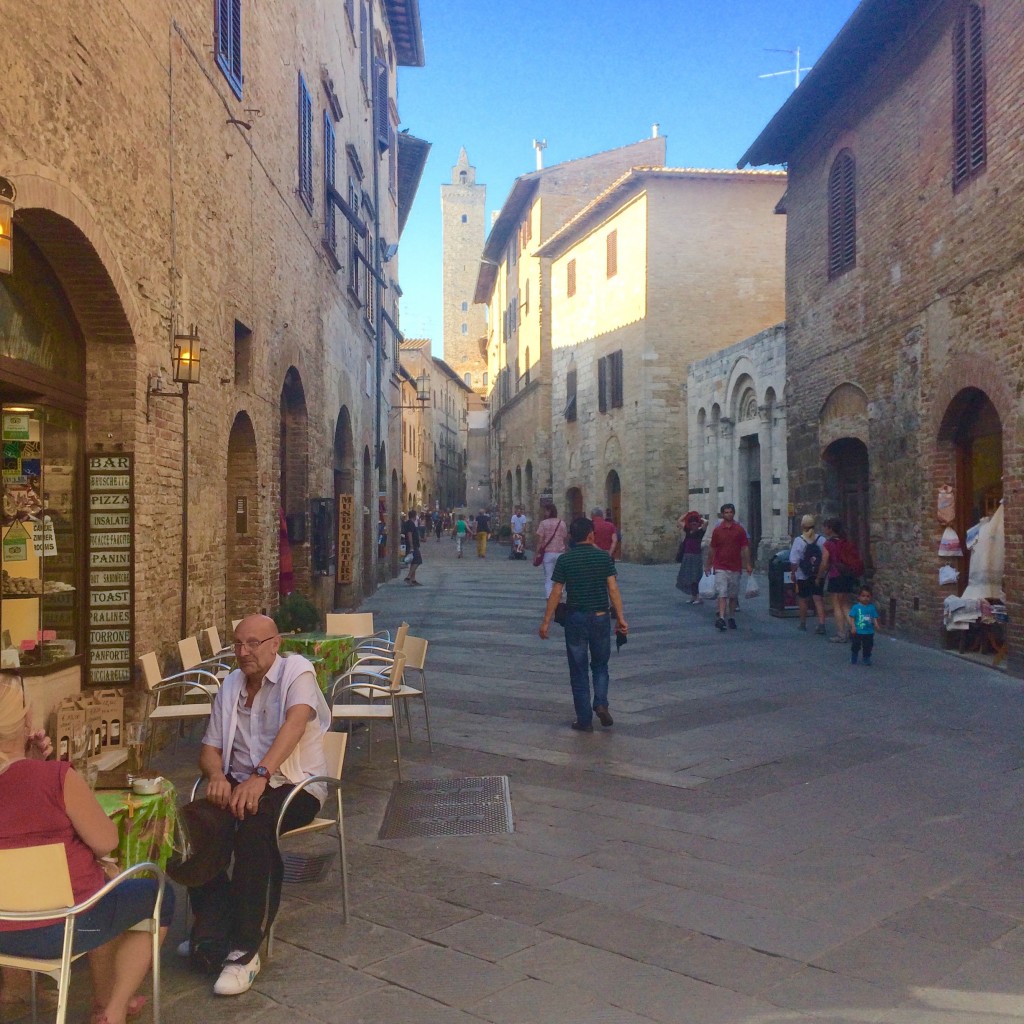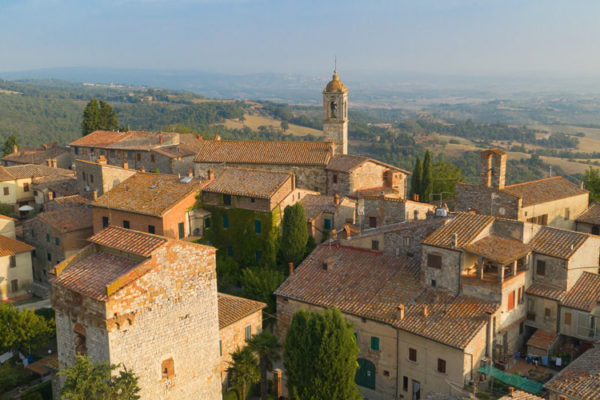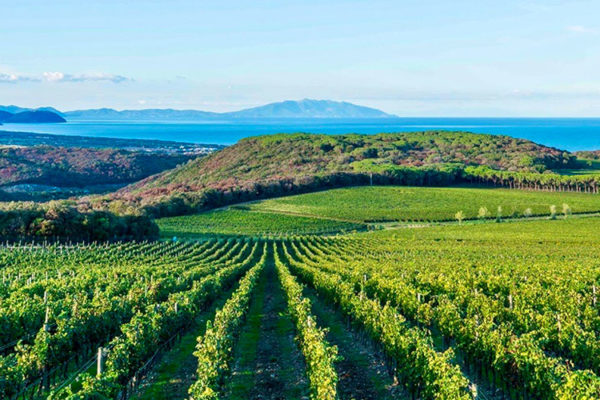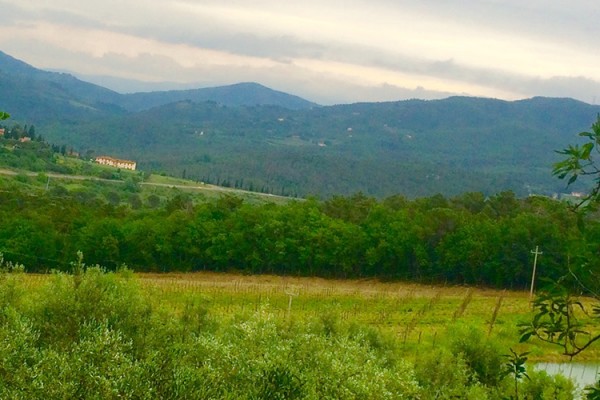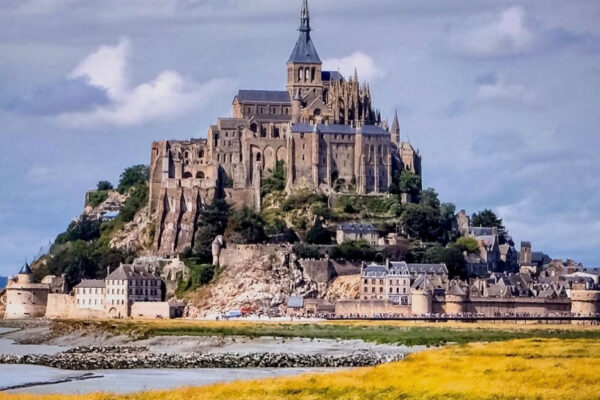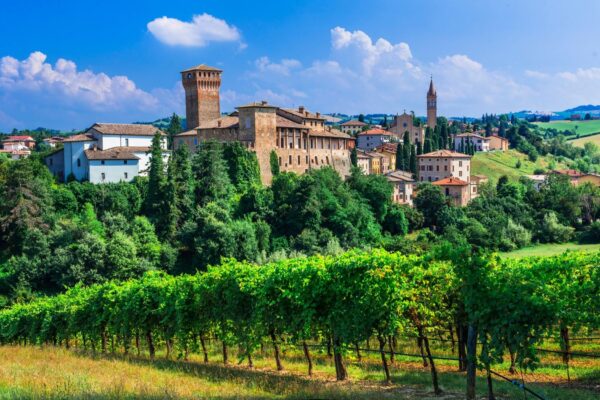SKY WALKING AT SAN GIMIGNANO
by Marla Norman, Publisher
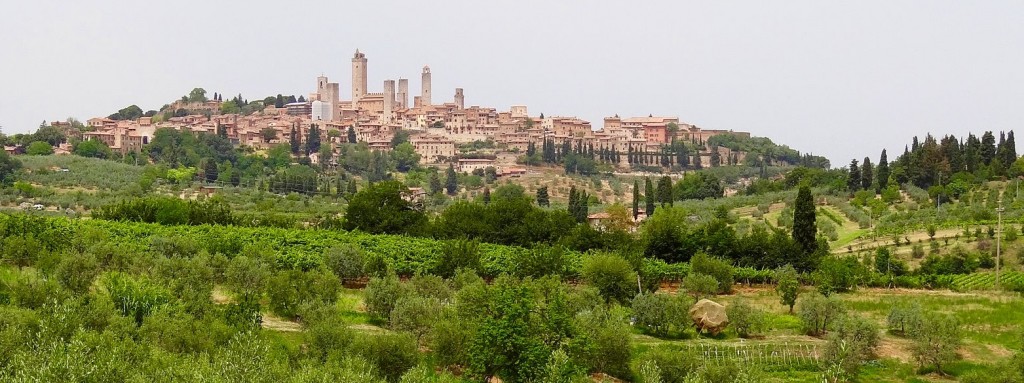
The towers of San Gimignano, silhouetted against a Tuscan sky. In the 13th century over 70 towers existed. Photo courtesy of Wikipedia.
The sight of San Gimignano’s 14 medieval towers, gracefully silhouetted against a cerulean Tuscan sky, is heart-stopping. Once you’re inside the tiny walled city, it’s even more astounding to imagine that at its peak, in the 13th century, there were 72 towers. It’s said that crossing the town by rooftop was easier than crossing on foot!
The towers were built as defensive measures when San Gimignano was embroiled in decades-long family feuds. Historians also speculate that the tall towers were meant to intimidate as well as provide strategic battle position. In spite of the bickering families, San Gimignano prospered until 1348, when the plague struck and killed over half of the inhabitants.
These days, swarms of tourists cover the city like a second plague. If possible, arrive early, or time your visit after 5:00 p.m. From April through October, most of the galleries and museums stay open until 7:30 p.m., so you can still see all the major art installations without being trampled by fellow travelers.
Stroll through the two main Piazzas. Piazza della Cisterna was constructed in a triangular shape and is lined with impressive Romanesque and Gothic palazzos. Piazza Duomo, as the name suggests, is the site of the major church or Duomo, Basilica Collegiata di Santa Maria Assunta. The walls of the Duomo are entirely covered with brilliantly-hued frescoes, painted by artists including Bartolo di Fredi, Taddeo di Bartolo and Lippo Memmi. Be sure to visit the Chapel of St. Fina built in 1468. The altar by Benedetto da Maiano and frescoes by Domenico Ghirlandaio are especially noteworthy.
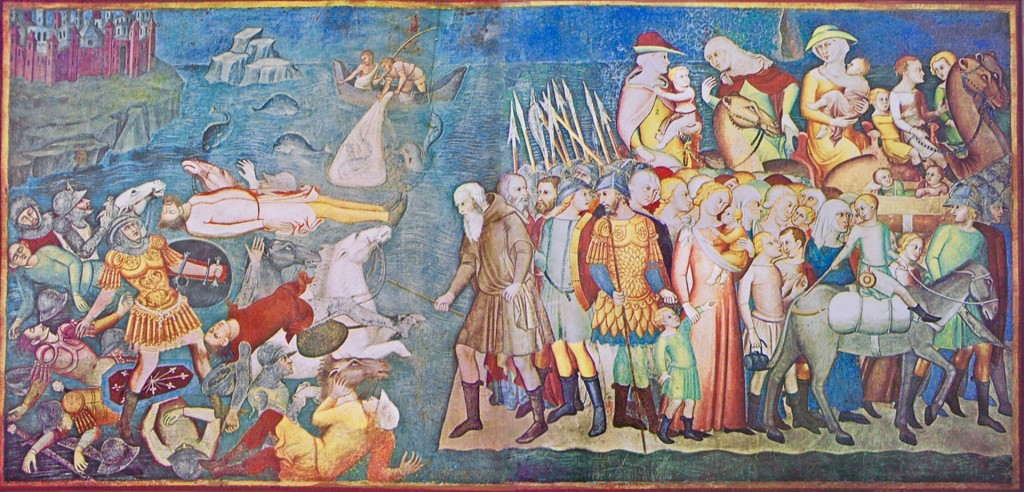
Brilliantly-hued frescos by artists, including Bartolo di Fredi cover the walls at the Duomo in San Gimignano. Photo courtesy of Wikipedia.
The museum adjoining the Duomo exhibits the renowned Madonna of the Roses by Bartolo di Fredi along with other works of painting and sculpture. See the Duomo web site for more information and a free audio guide: http://www.duomosangimignano.it
During World Ward II, retreating Nazis threatened to destroy the towers of San Gimignano and the Duomo frescoes. Thankfully their plans were never carried out. Film-lovers will remember Tea with Mussolini, featuring the work of well-known Italian director Franco Zeffirelli, who recreated those historical events.
Almost as famous as the towers of San Gimignano is the local wine – Vernaccia – made from grapes indigenous to the area with a DOCG status (Denominazione di Origine Controllata e Garantita, the highest classification for Italian wines.) Vernaccia has a long history, dating from the 13th century. The wine was even mentioned by Dante in his Divine Comedy. Full-bodied, but crisp and dry, this gold-colored wine is meant for sipping al fresco on warm summer evenings in Tuscany.


